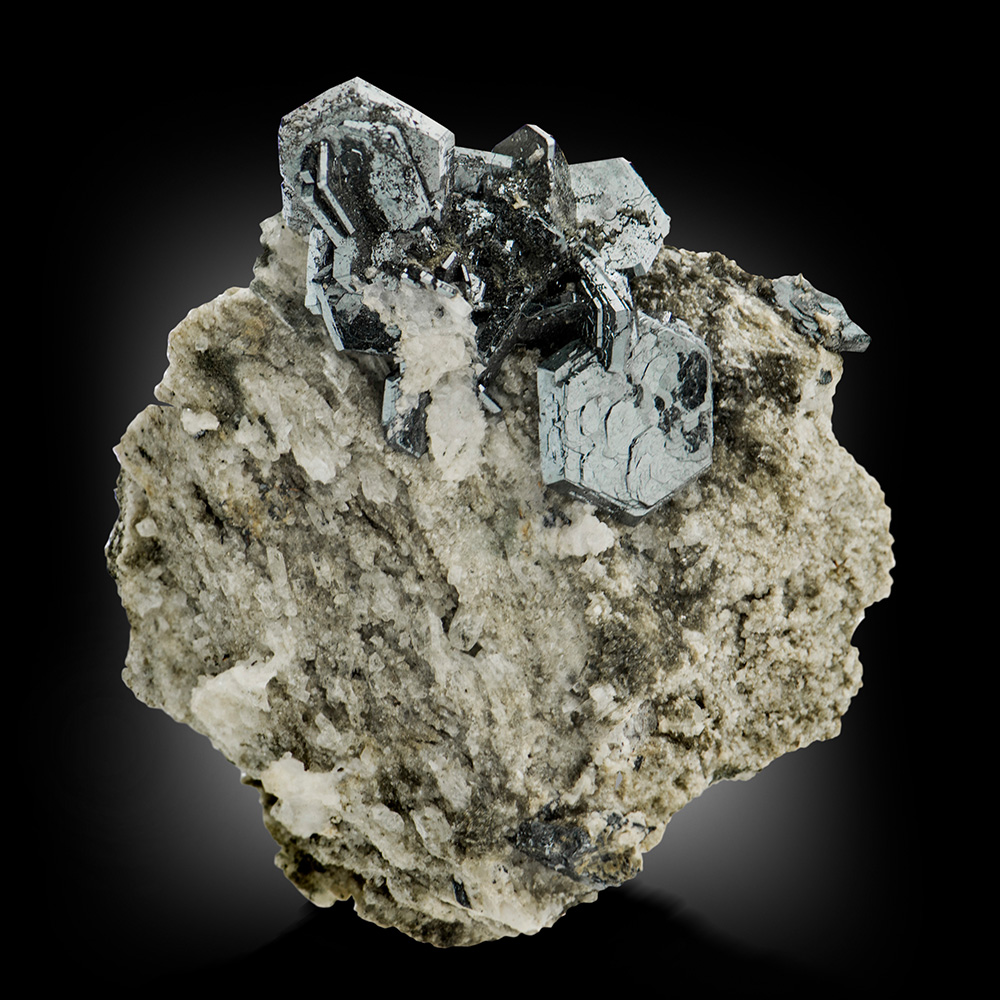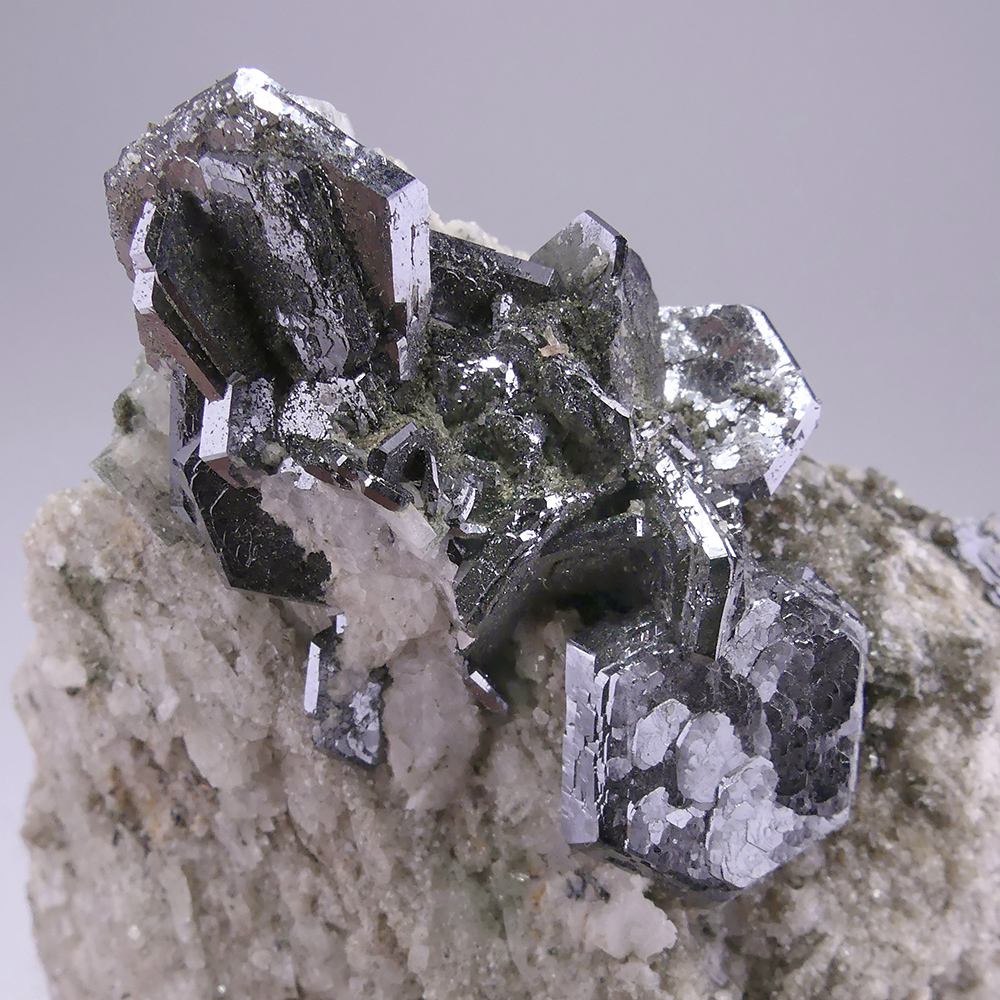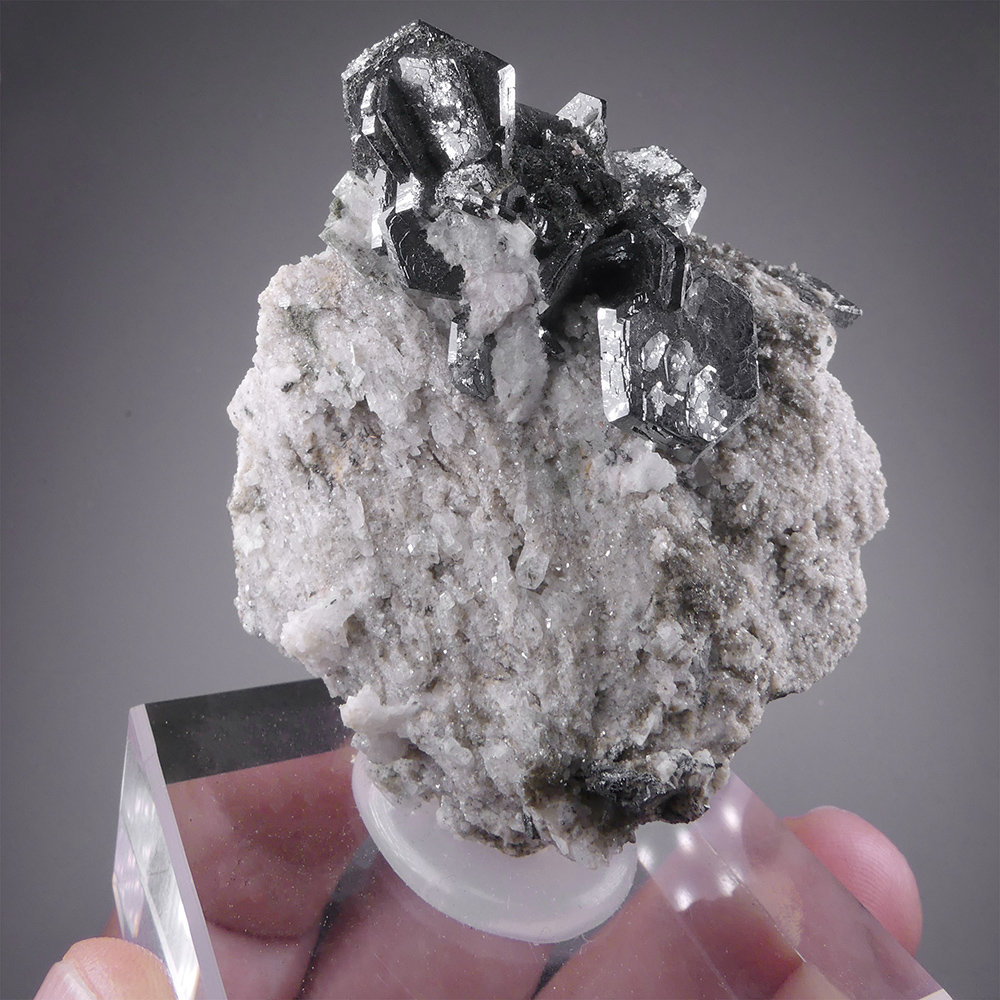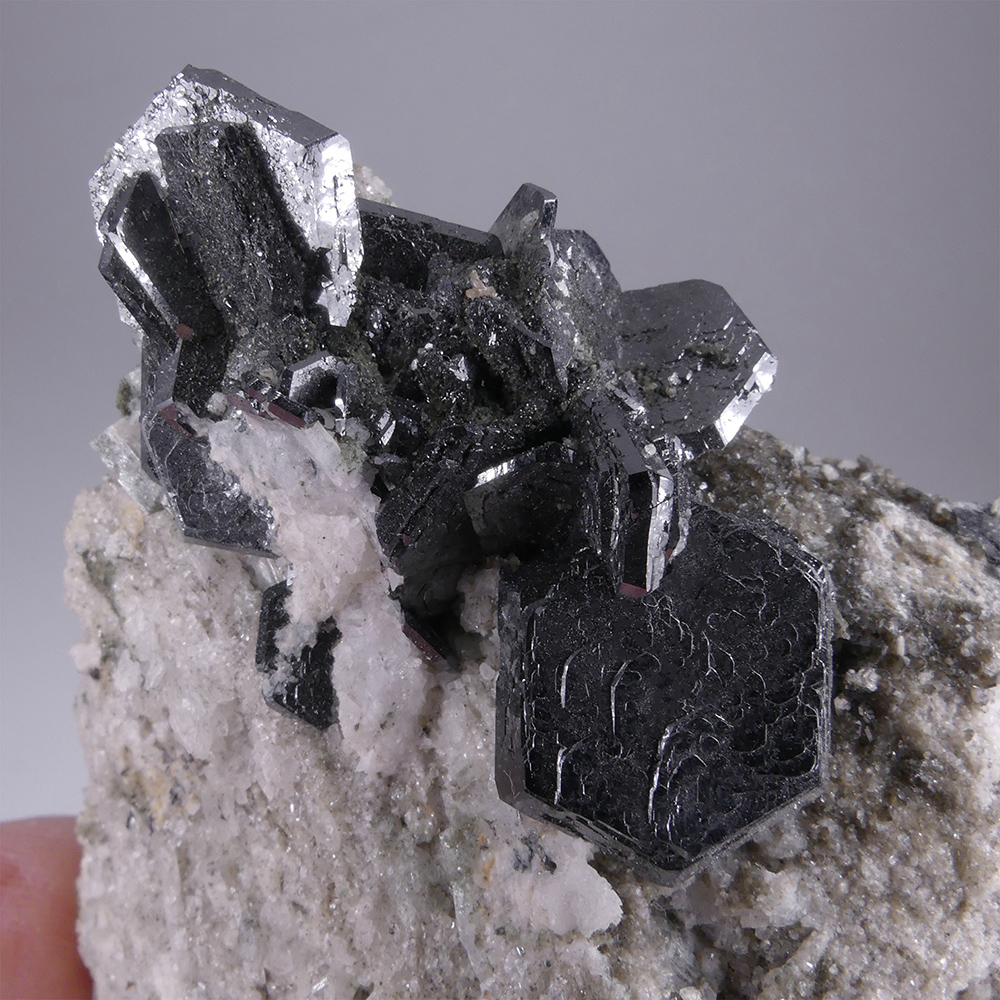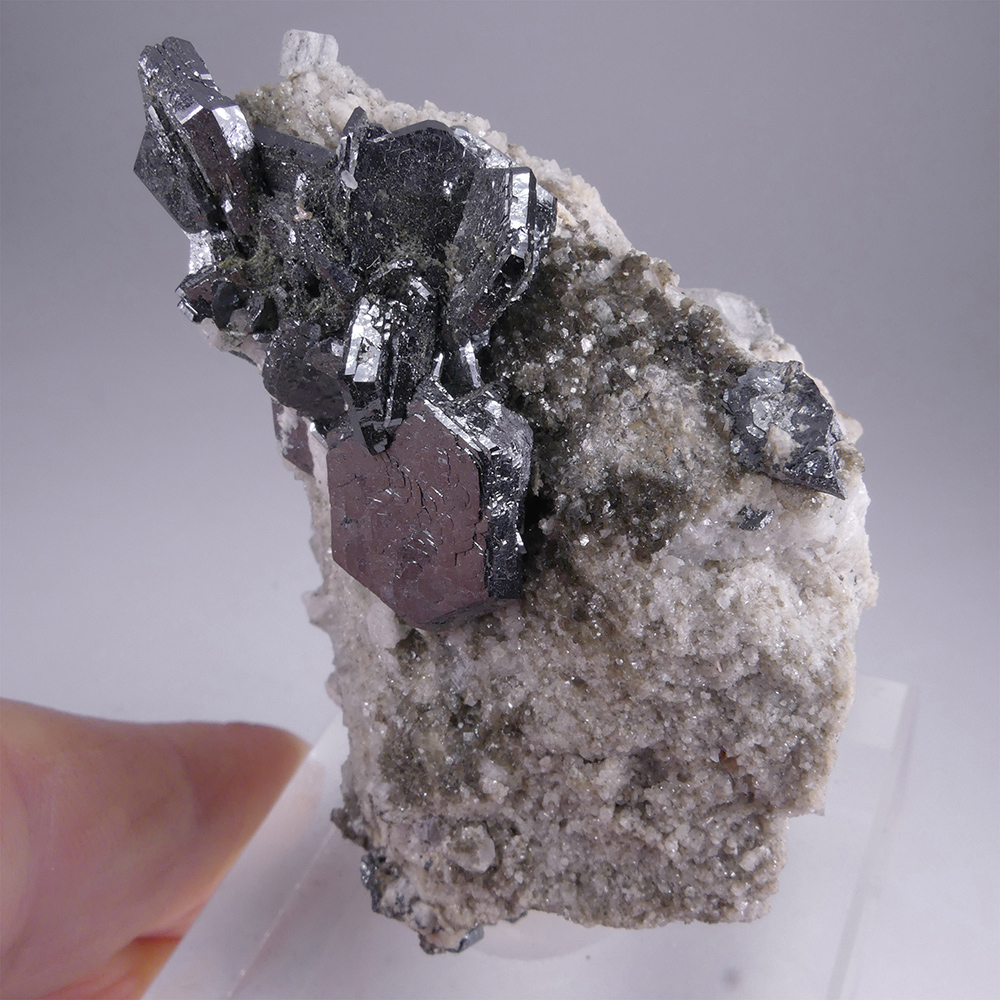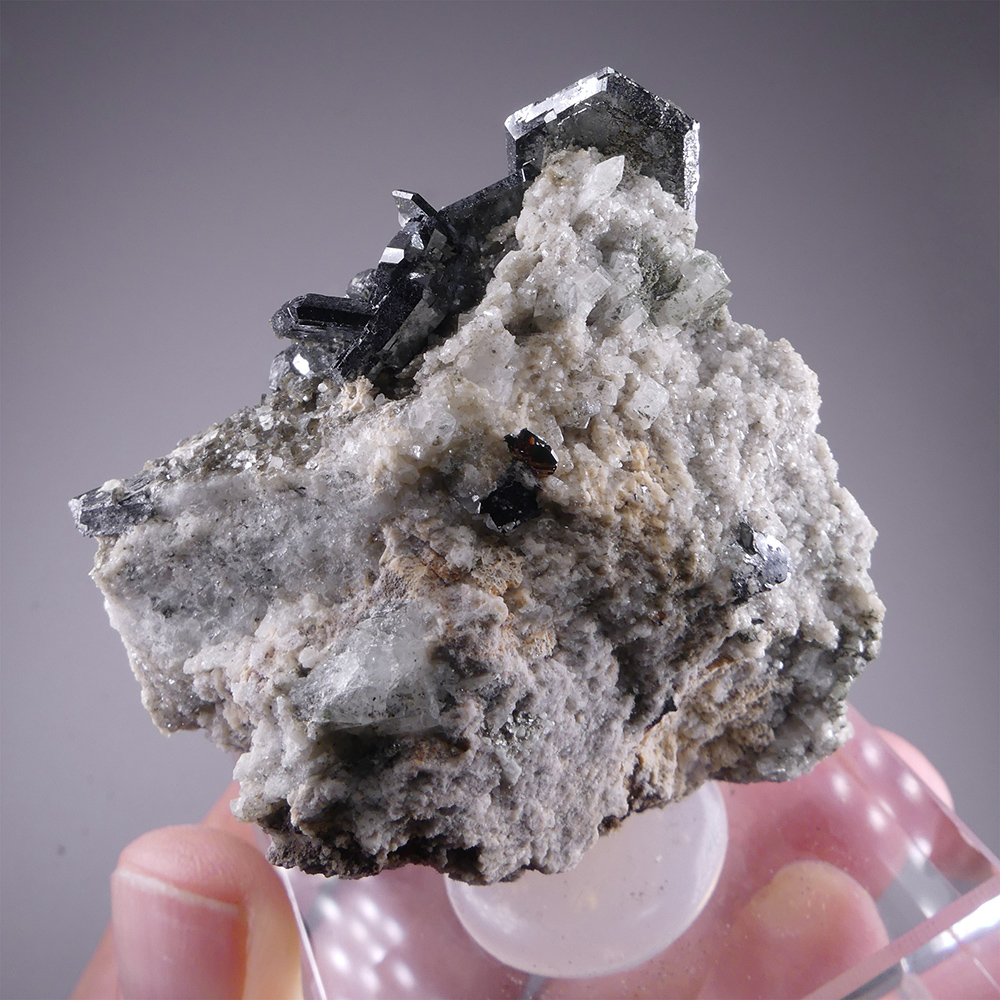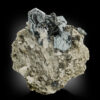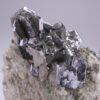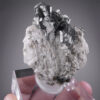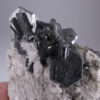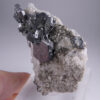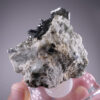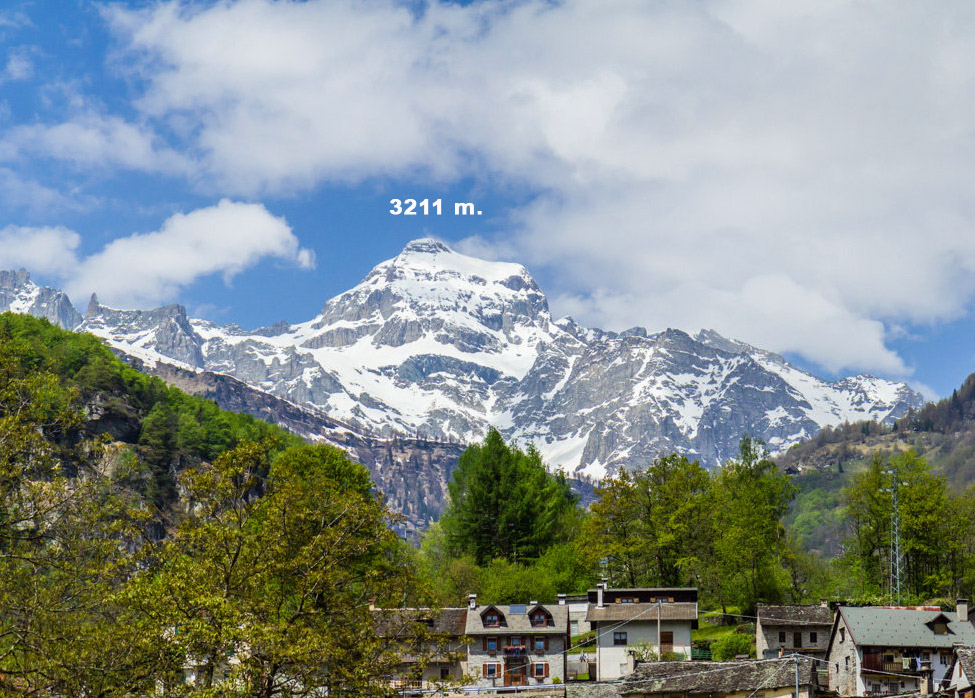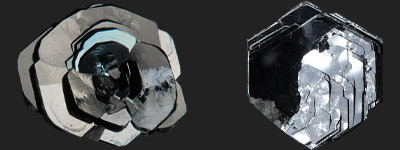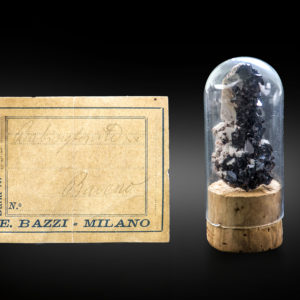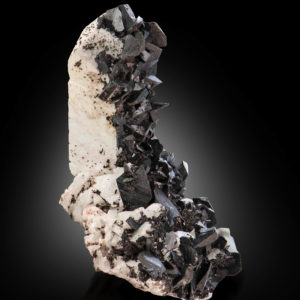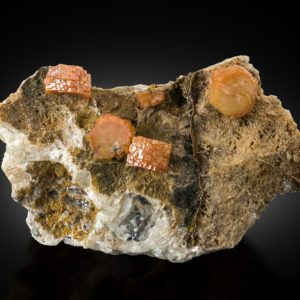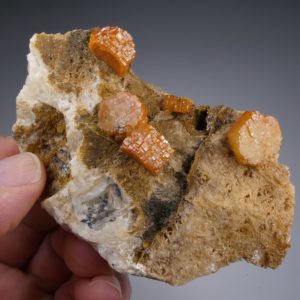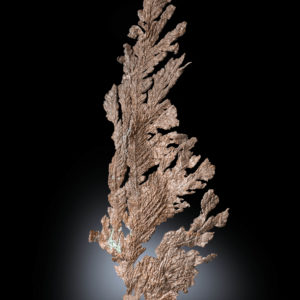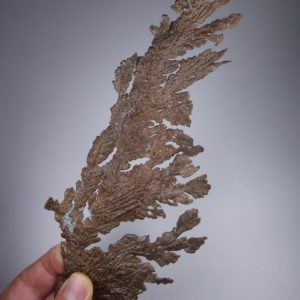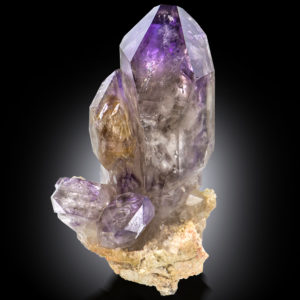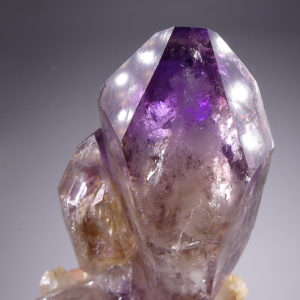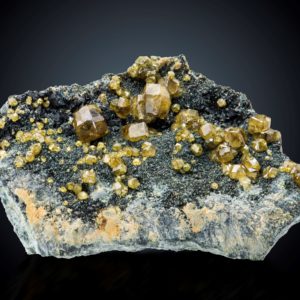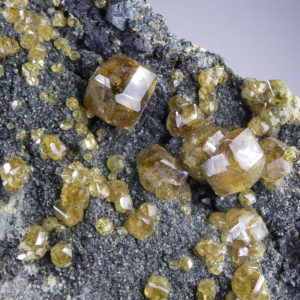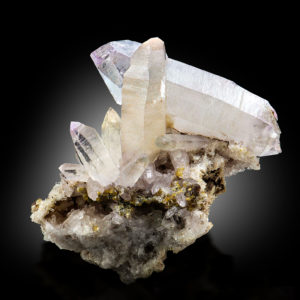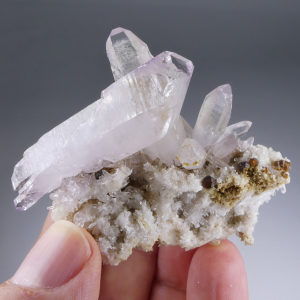HEMATITE – Italy- GFS0416
In stock
€ 800,00 +TAX
Hematite
Monte Cervandone area, Devero Alp, Baceno, Verbano-Cusio-Ossola Province, Piedmont, Italy
6,2×5,3×4 cm. (diameter about 1,3 cm.)
Beautiful Hematite (var. Eisenrose) from this well-know and famous italian locality consisting in a well-formed group of tabular hexagonal Iron Rose crystals, showing extraordinary luster and excellent aesthetics.
The Devero park was founded by the Veglia park authority in 1990; it has been established to protect the environmental and natural characteristics of the Divedro and Devero valleys. It is a regional park where you can look for minerals under authorization, and Monte Cervandone is a symbol mountain for the mineral prospectors, both on the Swiss side and on the Italian side. The Monte Cervandone, also known as Scherbadung mount, is a mountain of the Lepontine Alps on the Swiss-Italian border. Its Italian name has been used to name the mineral Cervandonite which has only been found there.
Hematite from Monte Cervandone is a well-known and highly prized mineral among collectors. The genesis of hematite in this region is closely linked to the geological history and metamorphic processes of the Alps. This area has been known for its mineral specimens since the 19th century. Collectors and mineralogists have long prized the hematite from this region for its aesthetic and crystallographic qualities. Often seen in tabular or platy habit, with a metallic luster and a characteristic steel-gray to black color, but sometimes showing a wonderful rosette-like or “iron rose” structure, sought after by collectors.
The hematite at Monte Cervandone is primarily formed through metamorphic processes. The Devero Alp region’s rocks, originally sedimentary and magmatic in origin, were subjected to high pressures and temperatures during the Alpine orogeny; the final result was the transformation of these original rocks into paragneiss and orthogneiss respectively; calc-schists and mica-schists are also present and derive from the metamorphic transformation of ancient limestones, marls, and claystones. This metamorphism facilitated the recrystallization of iron-bearing minerals into hematite. Hydrothermal fluids, rich in iron and other elements, played a significant role in the formation of hematite. These fluids circulated through fractures and porous zones in the host rocks, depositing hematite in veins and cavities. The interaction of these fluids with the surrounding rocks and the existing mineral phases contributed to the growth of well-formed “iron rose” hematite crystals. Hematite from Monte Cervandone often occurs in association with other minerals, including quartz, albite, and calcite. These associations provide insights into the conditions under which the hematite formed, such as temperature, pressure, and fluid composition. For more info ![]() and
and ![]()
The Monte Cervandone area, due to its geological complexity, is a place of high interest for mineralogical research, where more than 125 different mineral species are present.
The fissures in the gneiss contain well-crystallized minerals such as quartz, hematite, anatase, titanite, and adularia. The calc-schists have rather abundant fissures and generally contain the following minerals: quartz, calcite, muscovite, dolomite, pyrite, rutile, and anatase, sometimes forming very showy druses. A band of gneiss at the base of Mount Cervandone, due to a unique formative process and the peculiar and abundant presence of arsenic and other minerals from the arsenate family, presents other rare or unique minerals in the world such as Cervandonite-(Ce), Deveroite-(Ce), Cafarsite, Gasparite-(Ce), Paraniite-(Y), Fetiasite, and others. For more info ![]()
In stock
Additional information
| Weight | 0.080 kg |
|---|---|
| Dimensions | 6.2 × 5.3 × 4 cm |
| Country | |
| Location | Monte Cervandone area, Devero Alp, Baceno, Verbano-Cusio-Ossola Province, Piedmont |
| Species |

